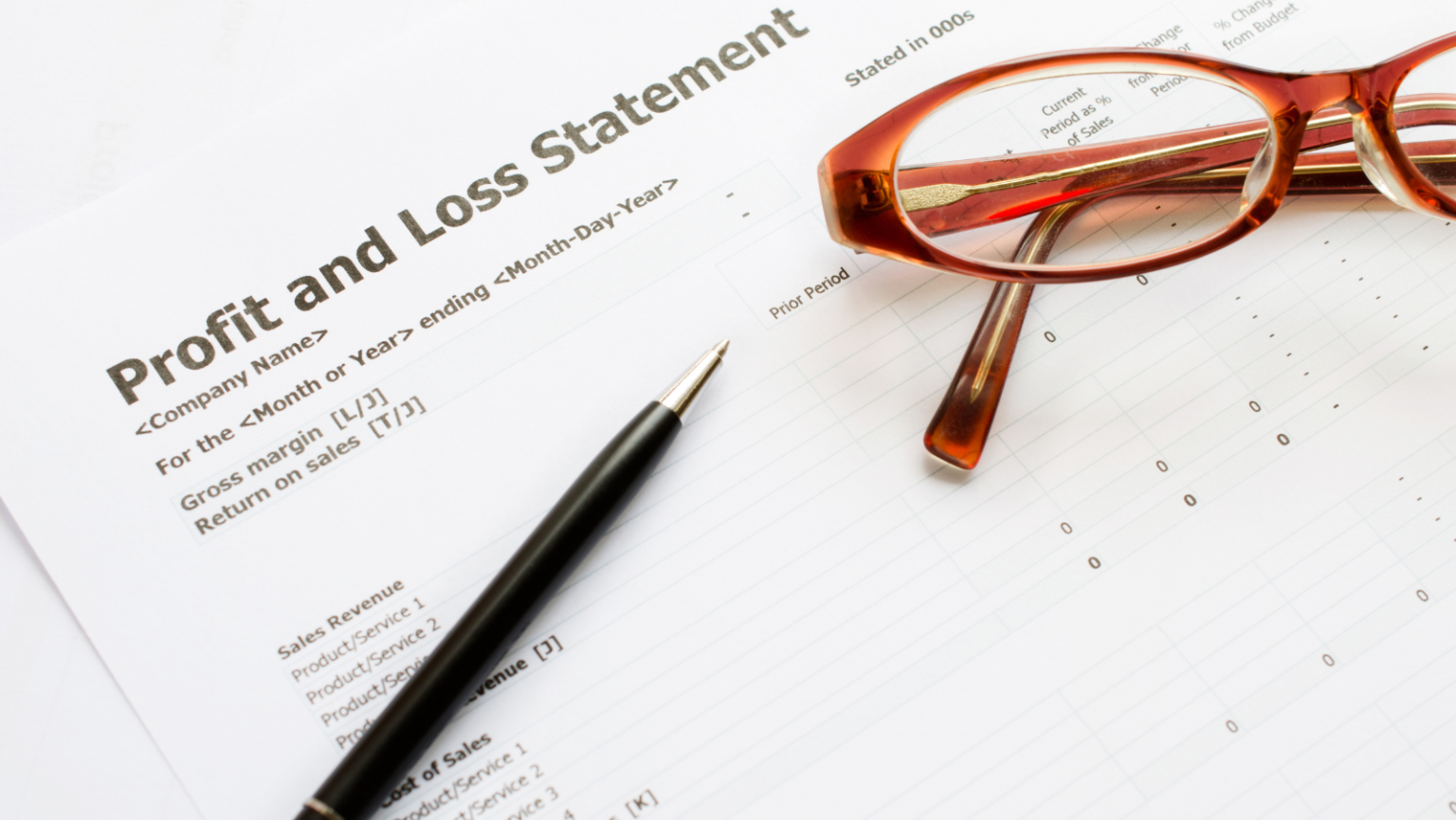
Every business strives to make a profit, but what exactly is profit? In the most basic sense, profit is the difference between a company’s revenue and its expenses. Revenue is the money that comes in from sales, while expenses are the costs associated with running the business. When revenue is greater than expenses, the company has made a profit. Conversely, when expenses are greater than revenue, the company has suffered a loss.
While this may seem like a simplistic view of profit and loss, it is actually the foundation upon which a company’s financial health is built. To get a more accurate picture of a company’s profitability, one must look at the gross profit. The gross profit is the difference between the cost of goods sold and the company’s revenue. This number gives a much clearer picture of how much money a company is actually making from its sales. Ultimately, whether a company is profitable or not depends on its ability to generate more revenue than it spends on expenses. This simple concept forms the basis of any business’ quest for profits.
“If you don’t have the right kind of data on your business, that is the first thing you need to figure out how to get”.
A profit and loss statement is one of the most important tools a business owner has for keeping track of their company’s financial health. By including both revenue and expenses, a profit and loss statement gives a clear picture of whether a business is making or losing money. This information is crucial for making informed decisions about where to invest time and resources. Additionally, the gross profit margin can be used to compare different products or services and determine which are more profitable. For these reasons, it is essential to keep an up-to-date profit and loss statement.
Every business is in business to make a profit. That profit comes from the selling of goods or services at a price that is higher than the cost of producing those goods or services.
The difference between the revenue generated from sales and the cost of goods sold is known as the gross profit. From that gross profit, businesses have to pay their expenses, which include things like rent, utilities, employee salaries, and marketing costs.
The difference between the gross profit and the total expenses is known as the net profit. It is important for businesses to keep track of their profit and loss so that they can make decisions about how to increase their net profit.
One way to do this is to use financial statements called profit and loss statements. These statements show the revenue and expenses for a period of time, usually one month or one year. By looking at these statements, businesses can see where they are making money and where they are losing money. They can then make changes to their operations in order to increase their net profit.
Another important financial statement for businesses is the cash flow statement. This statement shows how much cash is coming into the business and how much cash is going out of the business. This is important because businesses need cash to pay their bills and make investments.
By tracking their cash flow, businesses can ensure that they have enough cash on hand to meet their needs.
How do you run a company if you have no idea what the numbers are??
Here are the 10 listed tips to maintain a good company’s financial health with a P & L statement

A company’s financial health is reflected in its financial statements. The most important of these statements is the Profit and Loss (P&L) statement, which provides a snapshot of a company’s revenue, expenses, and profits over a specific period of time. As such, it is crucial for business owners to have a clear understanding of their P&L statement and what it is telling them about their business.
It is important to keep track of all expenses, both big and small. Even seemingly small expenses can add up over time and eat into profits. As such, it is important to carefully monitor spending and make sure that all expenses are necessary and justified.
Another important aspect of maintaining a healthy P&L is making sure that you are billing correctly. This includes ensuring that all invoices are accurate and that customers are being billed in a timely manner.
It is also important to stay on top of collections. This means making sure that customers are paying their invoices on time and that any outstanding payments are collected promptly.
Healthy cash flow is essential for any business, and it starts with the P&L statement. To maintain healthy cash flow, it is important to keep a close eye on your P&L and make sure that your revenue is consistently outpacing your expenses.
Every business has slow periods, but it is important to have a plan in place for how to weather these times. This may include cutting back on expenses or utilizing short-term financing options to bridge the gap.
It is important to make sure that your business is profitable. If your profits start to dip too low, it may be necessary to take action in order to improve the bottom line. This may include increasing prices or finding ways to reduce expenses.
One of the best ways to maintain a healthy P&L is to invest in your business. This may include investing in new equipment, upgrading your facilities, or expanding your marketing efforts.
If you sell physical goods, it is important to manage your inventory carefully. This includes keeping track of what you have in stock, setting reorder points, and avoiding overstocking.
The best way to keep on top of your company’s financial health is to review your P&L statement on a regular basis. This will help you to identify any potential problems early on and take corrective action before it is too late.
As a business owner, it’s important to stay up-to-date on your company’s financial performance. One key way to do this is to regularly review your company’s profit and loss statement. An up-to-date income statement can help you make informed decisions about where to invest your resources and how to grow your business. The profit and loss statement shows your company’s net income, or the amount of money left over after all expenses are paid. This figure can be used to assess your company’s financial health and track its progress over time.
By reviewing your profit and loss statement regularly, you can make sure that your business is on track and identify areas where improvements can be made.
1. Keep accurate records of your income and expenses. This will ensure that your profit and loss statement is accurate and up-to-date.
2. Review your profit and loss statement regularly. This will help you identify any trends in your business that could impact your bottom line.
3. Make adjustments to your prices as needed. If your costs go up, you may need to increase your prices to maintain your profit margin.
4. Review your expenses and try to find ways to reduce them. This can help boost your bottom line significantly.
5. Keep a close eye on your inventory levels. Too much inventory can tie up working capital, so it’s important to keep it at a manageable level.
6. Stay on top of your receivables. Make sure you are invoicing your customers in a timely manner and collecting payments promptly.
7. Plan ahead for seasonal fluctuations. If your business has cyclical sales, make sure you have the necessary cash flow to tide you over during the slower periods.
8. If you don’t know how to keep data and numbers, hire someone who can handle this.
By following these tips, you can keep your profit and loss statement up-to-date and accurate, which will give you a clear picture of your business’s financial health.

While financial statements are primarily used to track your business’s financial health, they can also be helpful for comparing your performance to other businesses in your industry. This can be useful for identifying areas where you are excelling or falling behind your competitors. For example, if you see that other businesses in your industry have higher profit margins, you may want to investigate why this is the case and see if there are any steps you can take to improve your own margin.
Similarly, if you notice that other businesses in your industry have higher revenues, you may want to explore ways to increase your own sales. By regularly reviewing the financial statements of other businesses in your industry, you can stay up to date on trends and ensure that your business is remaining competitive.
A profit and loss statement (P&L) is one of the most important financial tools for businesses. By tracking income and expenses, it provides a clear picture of a company’s financial health. However, P&L statements can also be used to assess business risk. By analyzing trends in revenue and expenses, businesses can identify areas where they are vulnerable to financial shocks.
For example, companies with high levels of inventory relative to sales may be at risk of having to write off excess stock. Similarly, companies with large amounts of outstanding debt may be at risk of defaulting on their loans. By identifying these risks early, businesses can take steps to mitigate them and protect their bottom line.
A profit and loss statement (P&L) is a financial statement that summarizes the revenues, costs, and expenses incurred during a given period (usually a month or a quarter). It is an important tool for managing and planning a business’s finances, as it can help you to track progress, set financial goals, and make informed decisions about where to allocate resources. The P&L statement includes information on income, expenses, profits, and losses. This information can be used to assess the financial performance of a business over time and compare it with other businesses in the same industry.
By analyzing the P&L statement, you can identify trends and problem areas, and develop strategies to improve the financial health of your business.
The profit and loss statement is one of the most important financial statements a business can have. It shows how much money your company has earned and spent over a specific time period. An up-to-date profit and loss statement can help you make informed business decisions, assess your risk, and plan for the future. If you want to learn more about how to manage the numbers in your business, I suggest reading my book “37 Business Lessons on How to Succeed in Business With No Money, No Education, and No Clue”, Where I have listed multiple strategies to keep your all ducks in a row!
 Copyright © 2023 – 2024 Brian Will Media. All Rights Reserved.
Copyright © 2023 – 2024 Brian Will Media. All Rights Reserved.